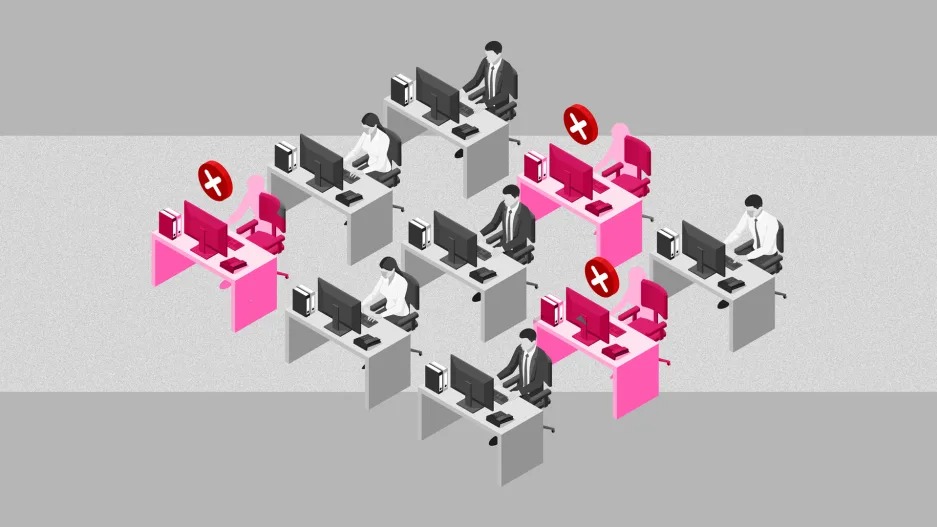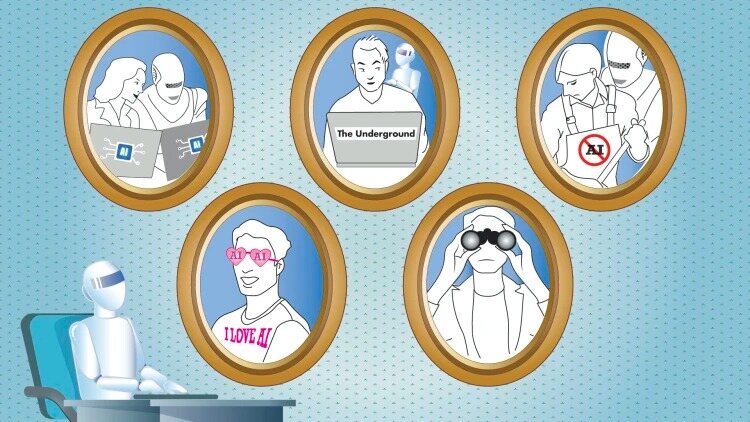- | 9:00 am
Layoffs can cause fear and grief. Here’s how teams can process those feelings using Appreciative Inquiry
Help your team emotionally process a layoff with compassion and accountability.

Tens of thousands of workers have been laid off so far this year.
Layoffs can cause feelings of fear and grief. You may be wondering, Who’s next? and Why not me? and What now? While you might not be ready or able to answer these questions, you can’t expect that these feelings of anxiety and dread will just go away. Having discussions with your team members about how they feel, what they’ve lost, and how they’ll cope is emotional intelligence in action.
Those emotions provide data about what your team members want, need, and value. Plus, you can uncover additional insights by taking an appreciative inquiry approach to resetting your team after layoffs.
Developed by David Cooperrider, Appreciative Inquiry (AI) focuses on leveraging an individual’s, team’s, or organization’s core strengths rather than seeking to overcome or minimize its weaknesses (known as a “deficit-based” approach), to achieve a more effective and sustainable future.
“Appreciate” means both to value and to grow, and “inquiry” is the process of getting curious. AI doesn’t mask, deflect, or eliminate learning about how people are feeling and what is difficult; it mines for that data differently.
As an Appreciative Inquiry facilitator, I use this approach regularly. Teams who could have gotten stuck discussing challenging topics like “dealing with difficult people” are better able to identify what they want to be different when the conversation is focused on “fostering respectful relationships.” When a client wants their team to delve into “managing customer complaints,” I suggest we focus on discussing how they can “delight our customers.”
Here are approaches you can take to help your team emotionally process a layoff with compassion and accountability.
1. ASK A QUESTION TO SPARK A CONVERSATION
To help your team reset emotionally, ask a question that invites individuals to reflect broadly. This includes asking them to think about what is working rather than what isn’t, as well as what they want rather than what they don’t want.
Some examples of potential questions include:
- What about how you’re handling this are you proud of?
- Who are you proud of on this team (including those who were laid off)?
- How can we live our values during this time of transition?
- What’s the opportunity in front of us?
While you can ask these questions to the team as a whole, you can also break the team into pairs or triads for more intimate discussions. Then ask each subgroup to report back key themes to the larger team.
This conversation will likely generate more positive emotions than previous conversations you’ve had about layoffs. Why is that important? AI research shows that “positive affect leads to positive action”; in other words, when your team members feel positive, they are more likely to act in positive, productive ways.
2. WHAT WE FOCUS ON GROWS
Next, I recommend teams set new goals to focus on. “Focus” for a team can mean many things. It can mean dedicated time, money, energy, or special attention. When a team invests time, money, energy, and/or attention on what it wants more of, it is more likely to accomplish it.
This conversation should be aimed at helping team members reflect on what they’ve focused on so far, the impact that had, and how that focus might continue or change in the New Normal. It also opens the door for a discussion on positive approaches to disagreement in potential conflicts of priorities.
Here are some ways to start this conversation:
- Let’s think about our individual and collective uses of time, money, energy, attention, and other resources in the past six months.
- What did you personally focus on? What about that was important to you individually?
- What did our team focus on? What about that was important to us collectively?
- What were the payoffs of our focus?
- How could we leverage that focus even more going forward?
- What shifts in focus do you think we should have?
- How should we handle conversations when we don’t agree on what we should focus on?
You may want to send these questions to your team members in advance of a meeting so that they have time to reflect. Coming to the conversation with written responses also can level the playing field between those who feel comfortable thinking on their feet and those who like to take a slower, more methodical approach.
3.VISUALIZE A POSITIVE OUTCOME
Teams can visualize what success looks like going forward. In their book Switch: How to Change Things When Change is Hard, authors Chip and Dan Heath call this the “Destination Postcard”—a vivid picture from the near-term future that shows what could be possible. The more positive and hopeful the image of the future, the more positive the present-day action will be.
To inspire a positive image that leads to positive action, ask your team members to show up to your team reset with photos or images that represent what they hope is possible for the team in the next year. If you’re feeling particularly crafty, you might ask your team members to draw that and share it with the team (or in subgroups, if they’re feeling self-conscious about their illustration skills).
Here are some questions you can ask to help your team visualize positively:
- What three words would you want to be able to use to describe this team at this time next year?
- What three words would you want others to use in describing this team?
- What do we want to become known for?
- How should we honor the contributions of those team members who were laid off?
- What are your highest hopes for this team in a year? In 2 to 3 years?
- How do you want to feel when working with this team?
- What impact do you want us to have? What impact do you personally want to have?
- What specifically do we need to keep doing/stop doing/start doing?
- What specifically can you keep doing/stop doing/start doing to help?
Have your team members convert the key takeaways from this conversation into time-sensitive action plans—one for the team as a whole, and one for each individual team member. Discuss the progress of team plans regularly during meetings, and make sure that one-on-one discussions address the individual plans to encourage forward, positive momentum.
And remember this: You don’t need to wait for layoffs to refresh, restart, or reset your team.







































